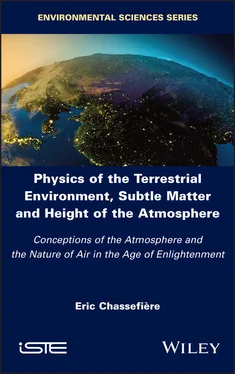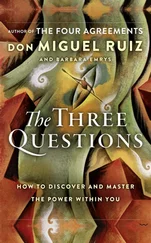According to Newton, fixed bodies heated to a considerable degree emit light, and this emission is done by the vibration of their parts. Bodies rich in “earthly and sulfurous parts” become luminous when these parts are agitated, either by the application of an external fire, or by friction, percussion, or putrefaction:
Thus, sea water in a storm, quicksilver [mercury] stirred in a vacuum, the back of a cat, or the collar of a horse rubbed against the fur in a dark place, wood, flesh, and fish as they putrefy, fumes rising from corrupted waters, commonly called will-o’-the-wisps, wet hay and wheat piles, glowworms, amber and diamond when rubbed, steel beaten with a stone, etc., etc. give off light.
The entry HEAT in the Lexicon provides additional information on the approach of English scholars. In it, heat is defined as “one of the four Primary Qualities, and seems to consist only, or at least chiefly, in the local Motion of the small Parts of a Body Mechanically modified by certain Conditions, of which the Principal is the vehement and various Agitations of those small Insensible Parts.” The question of the existence, or lack thereof, of an immutable body known as fire, which would produce heat, is not raised. The author of the entry sets out three conditions for the production of heat. The first is that the small parts should be agitated with a degree of violence and speed greater than that necessary to produce fluidity. The second is that this violent agitation should also be varied, with the particles having to move in all directions. The third condition is that the particles agitated violently and in all directions must be small enough to be individually insensitive. Because, unless they are extremely fine and subtle, they cannot easily penetrate the pores of adjacent bodies and thus heat or burn them.
An interesting part of the entry HEAT in the Lexicon has to do with the relationship between heat and fire. It is said that Newton, at the end of his Optics, conjectured “That Flame is a Fume, or Exhalation heated red hot; that is, so hot as to shine: Because Bodies don’t flame without emitting a copious Fume, and this Fume burns in the Flame.” The author speaks of the will-o’-the-wisp, a vapor that glows without heat, “and there seems to be the same difference between this Vapour and Flame, as between rotten Wood shining without Heat, and burning Coals of Fire.” This example seems to be intended to show that the glow of will-o’-the-wisp is not a flame, the absence of both smoke and flame must be contrasted with the presence of both smoke and flame above the coals of fire. Another example is that of the distillation of essences: “if the Head of the Still be taken off, the ascending Vapour will take Fire at the Flame of a Candle, and be turned into Flame; and the Flame will run along the Vapour from the Candle to the Still.” In this example, the steam that rises from the still, which is smoked, turns into flame, and then returns as flame to the still, smoke and flame moving into each other. He further mentions the smoke that rises above bodies heated by fermentation which, if the heat becomes sufficient, shine and become flames, and the bodies which, burning, vanish into a fiery smoke, “which Smoke, if the Flame be put out, is very thick and visible, and sometimes smells strongly, but in the Flame loses its Smell by burning.” It is the nature of the smoke, in the latter case, that conditions the color of the flame (blue for sulfur, green for copper, yellow for tallow). And the author notes that the “Smoke passing thro’ Flame cannot but grow red hot, and red hot Smoke can have no other appearance but that of Flame.”
Thus, for English scientists, it was the heat, which is communicated to the bodies by mechanically agitating their parts, or by exposing them to fire, that was responsible for the emission of light. Newton also conjectured that “the Sun and stars are merely excessively heated earthly bodies.” According to others, such as Boerhaave or Gravesande, it was fire, “a particular body as old as the others” that previously existed in all bodies, which is at the origin of the light emitted. Moreover, Newton considered the flame, and thus fire, a matter (in this case not subtle), by comparing it to smoke, whose sufficiently high level of heat causes ignition. Heat and fire are thus closely linked, everyone recognizing the property of fire to give heat, but only some people consider that heat produces fire, while others make the matter of fire pre-existing in bodies. And, obviously, the English academic community, very much focused on the idea of the mechanical generation of heat, dispensed with subtle matter to explain caloric and igneous phenomena.
What do the dictionaries of the time say about fire? The DUF-1690, in the entry FEU (FIRE), presents it as “a hot and dry element that is part of the composition of all natural bodies”, and this definition did not change in the 1727 edition. The Encyclopédie directly poses the question: “But is fire a particular matter? Or is it only the matter of bodies set in motion? This is what philosophers are divided on.” The entry points to many elements provided in the entries MATIÈRE (MATTER) and CHALEUR (HEAT). Fire is, according to the Cartesians, “the movement excited in the particles of bodies by the matter of the first element in which they swim”; according to Newton, “a heated body”; and according to others, such as Boerhaave, “a particular matter”. Pieter van Musschenbroek lent fire two specific characteristics, namely light and rarefaction (of bodies by fire). According to him, “wherever there is light, even without heat, there is fire.” He believed that it is to the matter of fire that we owe the increase in the weight of matters that burn out, as we have described. He considered that if electrical flows are fire, there are necessarily different kinds of fire. Concerning the weight of fire, we have seen that Boerhaave denied it because he attributed to the dense matter dissolved in the air the increase in weight of the calcined substances, while others, such as Lemery and Homberg, considered that this increase in weight was due to the matter of fire, which was therefore heavy. Is fire a fluid? If it has certain properties, it does not have the property of exerting pressure in all directions. The author of the entry opts for a “particular matter of fire, and present in all bodies”, as suggested by experiments on electricity. In so doing, he compares the matter of fire to electrical matter, a position that is held by Jean-Antoine Nollet, among others. After having reviewed various physical phenomena of fire, the importance of air for fire to be preserved is highlighted: “the experiment proves that fire is extinguished very quickly in the vacuum machine; and all the more quickly as the air is pumped out faster, and the container is smaller and better closed.” It is also necessary that the coarse parts of the food of the fire [“the bodies which serve to increase or maintain the fire”], such as smoke, be diverted from the fire, “a body remaining all the longer lit the less smoke it gives off, as can be seen in the wick and the peat coals.”
But it is in phosphorus that fire matter is present in the greatest quantities. The entry PHOSPHORE (PHOSPHORUS) in DUF-1690 describes phosphorus as “a matter that burns, or becomes luminous, without the need to approach a sensitive fire. It is natural, or artificial. [...] Natural phosphorus are materials that, without the help of art, at certain times become luminous, without ever having any detectable heat”, such as glowworms, or sugar when it is stored in a dark place. Natural phosphorus do not always glow, and never emit any heat. It is therefore an example of light that occurs without heat. “Artificial phosphorus are materials that become luminous by artifice, without needing to be lit by a sensitive fire.” Some artificial phosphorus burn and consume everything they come into contact with, such as animal oils produced by distillation (e.g. from urine); others have no heat, such as the Bologna stone, which, when heated beforehand, emits a faint glow in the dark. As the Encyclopédie says:
Читать дальше











